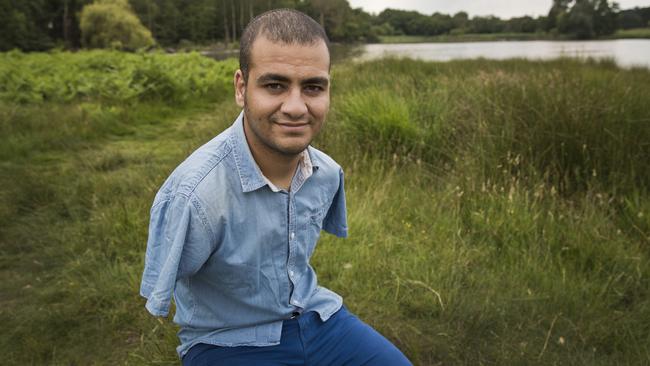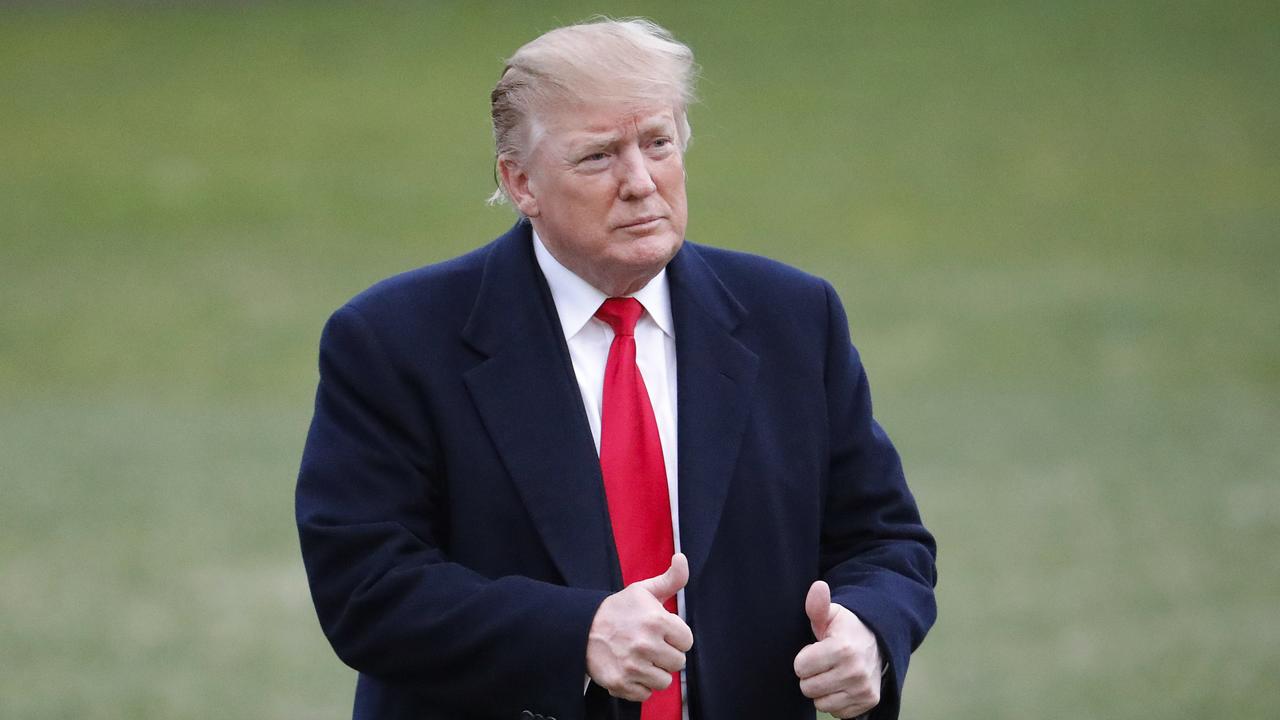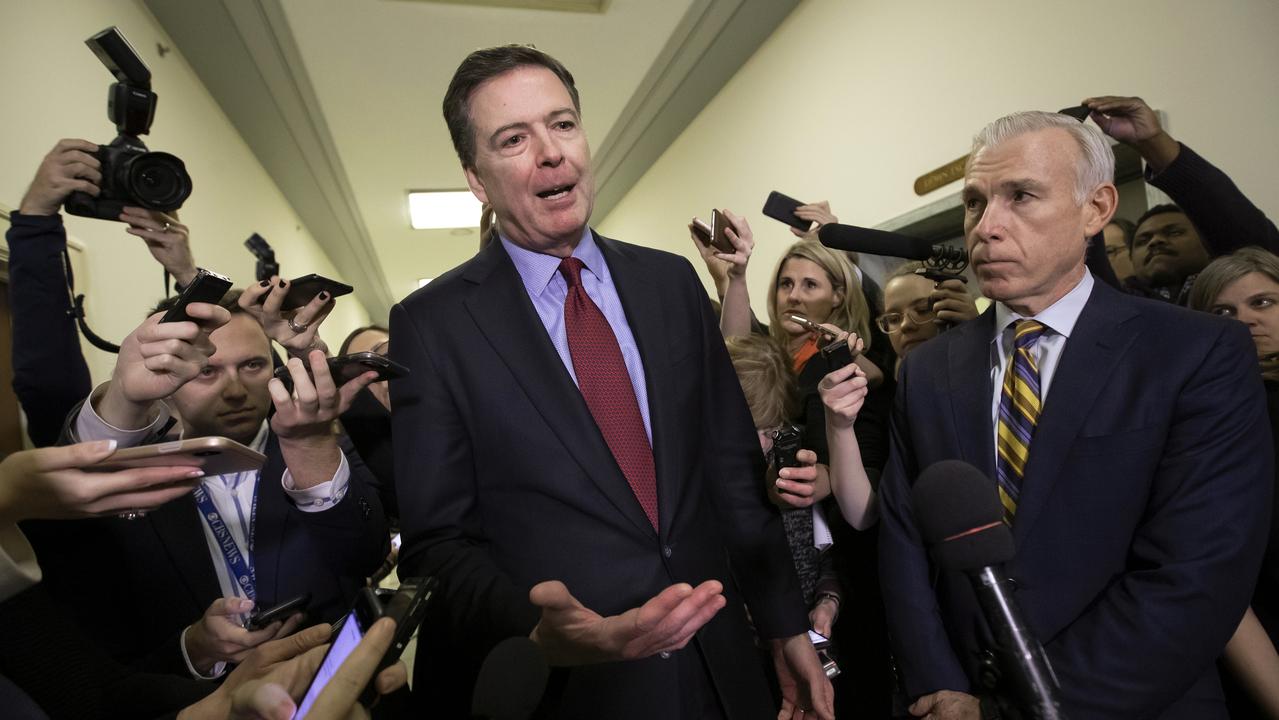Way out for a war child
TEN years ago, our team in Iraq helped to whisk an innocent victim to safety.

AS THE heat of Iraq’s spring quickly disappeared on a Sunday evening at the end of March 2003, two cars parked 450km apart were being hastily unpacked.
Just outside the southern port of Umm Qasr, photographer John Feder and I were taking clothes, petrol and sleeping gear out of our four-wheel-drive Pajero so we could travel more lightly as we reported the next day on the fighting between British and Iraqi forces around Basra. Working with translator Stewart Innes, we were one of the few news crews travelling independently in southern Iraq, rather than embedded with coalition forces.
Several hours to our north, Ismail Abbas, a 50-year-old driver and part-time farm worker, was pulling bedding and clothes from his car outside his small cement-block home in a hamlet of 10 houses on the edge of Baghdad.
Abbas and his two wives, Layla abd Hamza and Azhar Ali, had taken their children to stay with relatives in the ancient capital of Babylon to avoid US air strikes on Baghdad, but after several fatal coalition attacks there he had decided they would be better off at home.
Nestled among a dozen palm trees on the edge of a broad stretch of cornfields, their home measured 9sq m with two bedrooms, a tiny kitchen and a bathroom.
By 9pm everyone was in bed. Abbas slept in one room with his younger wife Azhar, who was seven months pregnant, and their two sons Ali, 12, and Abbas, 10.
His first wife, Layla, slept in the larger room with six of her seven children: 18-year-old Asma’a was already married and living with her husband’s family. It was a cold night so the family was tucked under heavy acrylic blankets.
Down in Umm Qasr I checked the news on my laptop just before midnight and two items caught my eye. One was the news that a reporter and photographer from Britain’s Sunday Telegraph had managed to drive in and out of Basra, which was still controlled by Saddam Hussein’s forces. The next day we would try the same thing. The other news item was that US commanders had ordered another round of bombing in and around Baghdad.
A few minutes later a US missile ploughed into Abbas’s hamlet, destroying eight houses and leaving his home a burning pile of rubble on top of his family.
A gas bottle exploded in the kitchen as the smaller room caught fire, its blankets bursting into flames on top of Ismail, Azhar and their two sons.
The other room did not burn and a roof beam kept most of the ceiling about 45cm off the floor, saving the lives of Layla and her children.
Hana’a, 15, told me months later that she woke up trapped under the cement blocks and wooden beams, screaming with her sisters for help as flames up to 3m high engulfed what was left of the other room.
As neighbours began pulling the girls from the rubble a burly farmer, Karim Jassim Ahmed, heard young Ali calling, “I’m here, I’m here.”
His parents and brother were already dead, their corpses horribly burned, and Ali was screaming with pain. The only part of his body that seemed not to have been burned was his face, which had not been covered by the blanket.
Ahmed told me later that as he dragged Ali clear he saw the boy’s left hand fall off “right in front of my face”.
Ahmed carried Ali to the nearby road and loaded him into the back of a neighbour’s Toyota Corona, which raced him off to one of Baghdad’s biggest hospitals, al-Kindi, where both his arms were quickly amputated.
Our trip into Basra the next day did not go well. We were arrested by Saddam’s forces and driven under armed guard to Baghdad to be kept under house arrest.
TWELVE days later, on Saturday April 12, we were tired, a little traumatised but free.
The US military had arrived in Baghdad and our guards had fled without the bloodbath of prisoners that we had feared.
Stewart, John and I had managed to find our car and salvage our cameras and other gear and now we were reporting again, visiting a hospital in a huge Shia suburb called Saddam City that would soon be renamed Sadr City, after a famous cleric.
It had already been reported around the world that this was the hospital caring for Ali, who had been moved here after looters overran his first hospital.
I thought Ali was an “old story” and I was much more interested in the fact local clerics had formed their own militia at the hospital to repel looters, a crucial first step in the arming and organisation of Baghdad’s Shia majority.
A doctor in a bad toupee insisted we tour the hospital and meet some of the patients, including Ali.
The doctors were adamant that Ali would die unless he was quickly moved to a cleaner environment and there had already been several offers of foreign help.
To try to stop his huge wounds from becoming infected he had been put in a room of his own that was barely clean, let alone sterile. Only two people at a time were allowed in and they had to wear gowns and white gumboots. It made sense that John should go in to take a photo and Stewart to ask questions from me in Arabic. While they were dressing a door swung open and I found myself looking straight into the eyes of Ali, who was holding my gaze from a distance of about 8m.
He was lying down with his head and shoulders protruding from what appeared to be a little tent, which was actually a metal frame to keep his blanket off his body. His face was unblemished, even beautiful, but his torso was a black mess of scorched flesh.
Our eye contact caught me by surprise and I instinctively smiled and nodded hello, lifting my right hand in a little wave.
He reacted just as instinctively, nodding back and lifting the bandaged stump of his right arm, which was just a few inches long. Confronted once again by his disability, he turned his face up towards the ceiling. I felt like an idiot who had offered a handshake to someone with no arms.
John and Stewart came out of his room in tears. When Stewart had asked about his wounds, all Ali would talk about was the loss of his parents and brother.
John used the small viewing screen of his camera to show me his close-ups of Ali and his big dark eyes, and I cried as we walked along the hospital’s dark corridors.
When we emerged into the sunlight of the courtyard we concentrated on the drive across an increasingly unruly Baghdad to be back at our hotel before curfew, and we thought we would never see Ali again.
Our story the next day focused on the Shia militia but carried John’s photo of Ali.
A wealthy reader of The Australian in Perth was so moved by the photo that he contacted the paper offering money to help Ali. I agreed to go back to the hospital to find out how he could help, even though I was sure Ali’s evacuation was already being arranged.
That reader would later withdraw his offer of financial help for Ali, but his call did at least get us engaged in Ali’s case.
We were shocked when we got back to the hospital to find that the many offers of foreign aid had come to nothing and Ali’s doctors were now angrily convinced that he would die there.
The hospital administrator, Mowafak Gorea, said the US military had refused to evacuate Ali to one of their hospital ships and he would never survive the long ambulance drive out of the country.
When I suggested flying him to Kuwait and its first-class hospitals Gorea said that was impossible because it would need co-ordination with the Kuwaiti government and a US military helicopter, and he did not even have a working telephone, let alone the contacts he would need.
But we had a car, a satellite telephone and flak jackets for driving around the city, and Stewart had contacts in Kuwait, where he had worked before the war.
Getting Ali out of Baghdad had somehow become our mission, partly because it would obviously be a good story, and partly because it was the humane thing to try to do.
But we also had selfish personal motivations.
Stewart, John and I had had nightmares and sleepless nights. We had feared for our lives and seen some terrible things, including watching a new friend bleeding to death in front of us after a US tank attack on our hotel.
We had not been able to help the dozens of other suffering children we had come across, but if we could help this one kid before leaving Iraq then at least something good might come from our time there, and we clutched at it.
After intense pestering, a US Navy petty officer named Ed Martin agreed on April 14 to find a helicopter if we could organise a hospital in Kuwait, a relative of Ali to travel with him, and the approval of the sceptical clerics and doctors at Ali’s hospital.
The next day Colonel Kevin Moore, the chief surgeon of the 1st US Marine Division, came to our hotel room where we put him on our satellite phone to Abdul Ridas Abbas at the Kuwaiti Ministry of Health.
A few hours later a US ambulance team, clearly unhappy about being surrounded by the Shia militia, arrived at the hospital to pick up Ali and sign a transfer agreement or receipt for Ali that the hospital insisted I also sign as “mediating agent”.
We then followed Ali’s ambulance to a nearby US military base and watched as he was loaded aboard.
John’s photo showed Ali was as excited as any 12-year-old to be flying for the first time.
“I wanted to look from the window,” Ali recalled this week with a laugh. “I said, ‘Move my stretcher closer to the window, I want to see the view from up in the air.’ ”
Six hours later he arrived in Kuwait, and we promptly followed him out of Iraq.
'If they haven't killed us in the first 10 minutes, history says we'll be right'


